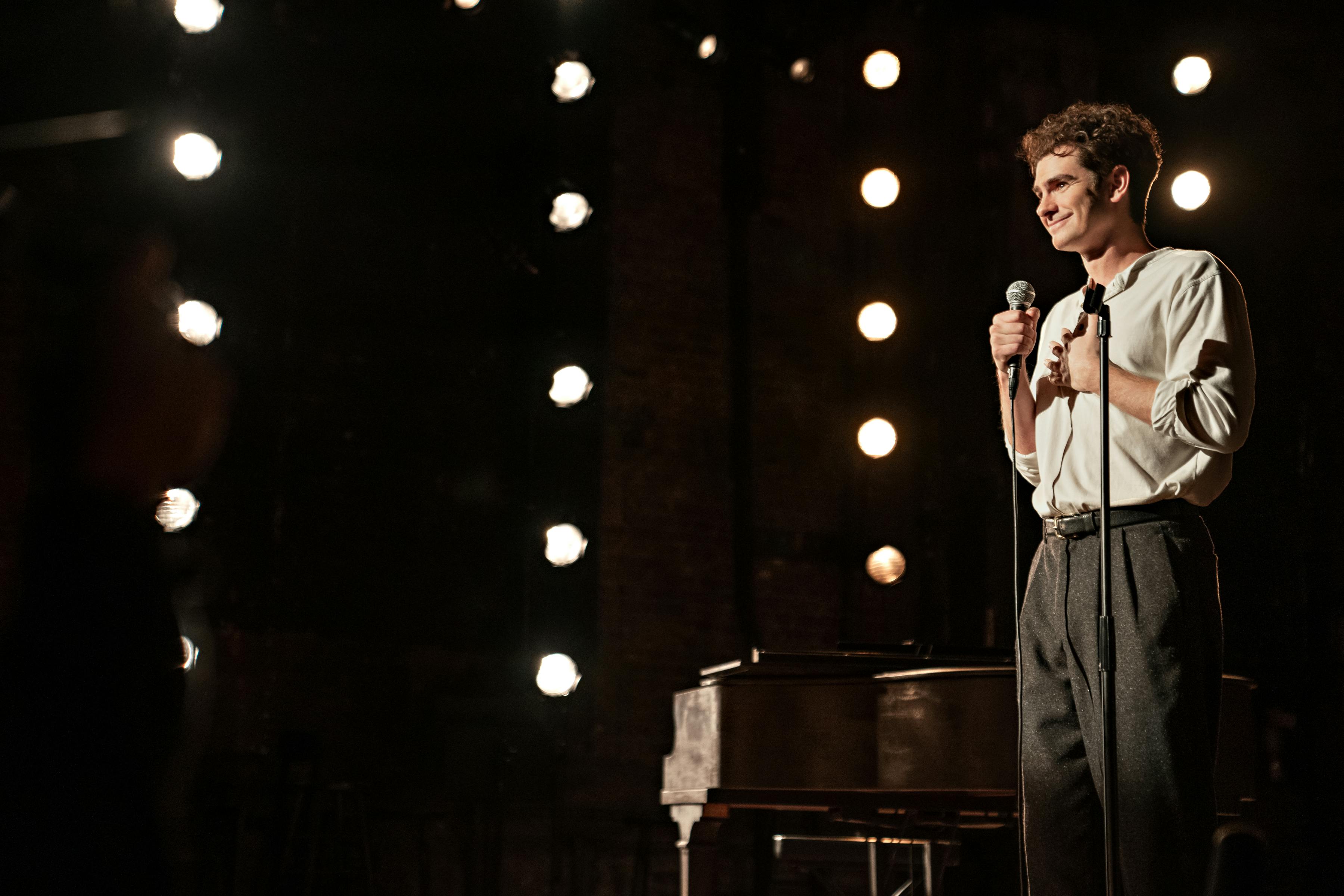The dynamic performers and longtime friends on their passion for acting and the intricacies of Garfield's revelatory work in tick, tick . . . BOOM!
After coming up together as part of a crop of young strivers that included Jamie Dornan, Robert Pattinson, and Charlie Cox, pals Andrew Garfield and Eddie Redmayne have built impressive, mirror-image careers. They’ve both fronted blockbuster franchises — Garfield playing an emo Peter Parker in The Amazing Spider-Man films; Redfield a shy magizoologist in the Fantastic Beasts and Where to Find Them series. Each won a Tony Award for Broadway performances (Garfield for Angels in America; Redmayne for Red).
The friends are also known for delivering consistently compelling work in critically acclaimed films: Redmayne earned an Oscar for his transformative turn as physicist Stephen Hawking in The Theory of Everything and was nominated again the following year for the drama The Danish Girl. Garfield earned his first Academy Award nomination for playing Desmond Doss, a World War II medic who saved the lives of dozens of men, in 2016’s war film Hacksaw Ridge. And for his astonishing portrayal of one of musical theater’s most influential figures, RENT creator Jonathan Larson, Garfield has just landed his second Oscar nomination with tick, tick . . . BOOM!
Adapted from Larson’s semi-autobiographical musical, the inspirational film sees a young Larson waiting tables as he struggles to make a name for himself in the 1990s New York theater scene and is stacked with musical theater talent. Hamilton and In the Heights creator Lin-Manuel Miranda makes his directorial debut; Dear Evan Hansen’s Steven Levenson writes the screenplay; and the cast is chock-full of Broadway legends — Bernadette Peters, Phylicia Rashad, Joel Grey, André De Shields, and Brian Stokes Mitchell among them. Yet on heartbreaking and beautiful songs such as “Why,” “30/90,” and “Boho Days,” Garfield more than holds his own, despite never having sung professionally before.
Redmayne, who sang onscreen in 2012’s Les Misérables, loved his friend’s performance, calling it “really beautifully heartfelt and physically, emotionally realized — it completely floored me.” Here, in a special conversation organized by the Screen Actors Guild, Garfield walks Redmayne through how this once-in-a-lifetime role came to be, and the two rhapsodize about acting’s ability to connect “our collective experience of being human beings.”
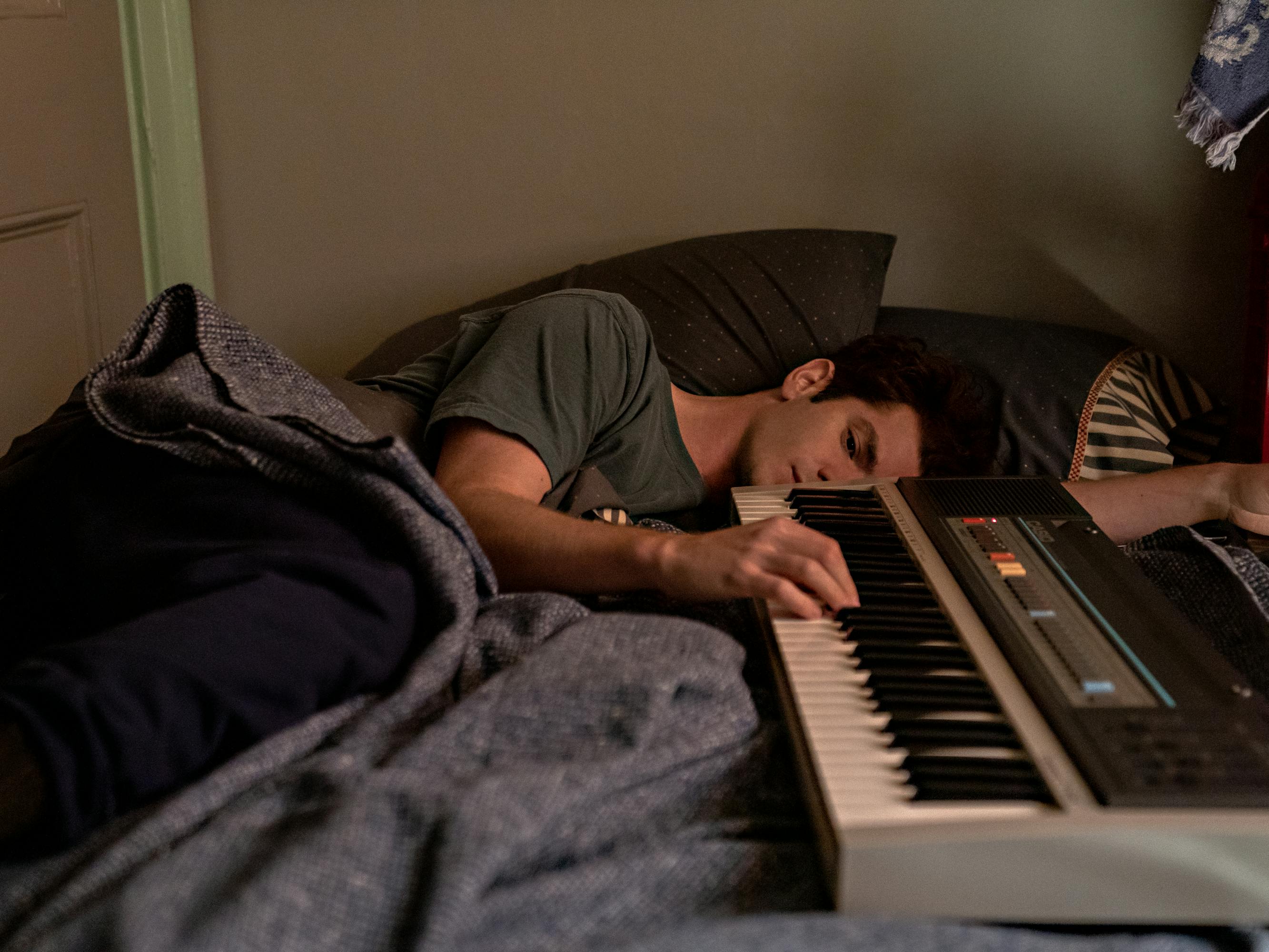
Andrew Garfield
Eddie Redmayne: I am thrilled to be interviewing my buddy Andrew Garfield, who is staggering in tick, tick . . . BOOM! I feel like, as old friends, we’ve never actually talked much about acting.
Andrew Garfield: I’m so happy that we get to be talking about acting and our relationship and our love for what we do. Talking about Jon and the process of making this film — it feels like my heart grows an extra size whenever I get to share the ripples of his work.
ER: Take me back to the embryonic moments. How does Jonathan arrive in your life?
AG: I loved RENT and that was kind of the extent of my relationship with Jonathan before this. Me and Lin-Manuel share a massage therapist called Greg Miele in New York City —
ER: I read somewhere that a massage therapist came into this story.
AG: And so, Lin is on Greg’s table one day and says, “Hey, you’re really good friends with Andrew. Do you know if he can sing?” And Greg, being the great friend he is, just lied through his teeth, “Yes, he’s the greatest singer since sliced bread. He’s a mixture between Jennifer Hudson, Ariana Grande, and Pavarotti.” As soon as Lin left the room, Greg calls me and says, “Hey buddy, can you sing? Now you have to because my reputation is on the line.” So I ended up meeting up with Lin and he asked me himself.
ER: In between that moment and meeting Lin, did you have singing lessons?
AG: I didn’t have the time. But also I was at the height of my Hamilton, In The Heights obsession — it was as if Lin was living in my psyche already. I was listening to him on the subway, cooking, and just trying to learn every single lyric.
He slid the music of tick, tick . . . BOOM! across the table and said, “This won’t make sense to you right now, but I promise it will.” [Hearing Jonathan’s music] was like being reunited with a long lost brother in art, in heart, in ethics, in a revolutionary longing to change things, in an understanding of what matters in life, in terms of community, in terms of the dignity of all human beings, the sacredness and the shortness of life. But the problem was, I had never sung.
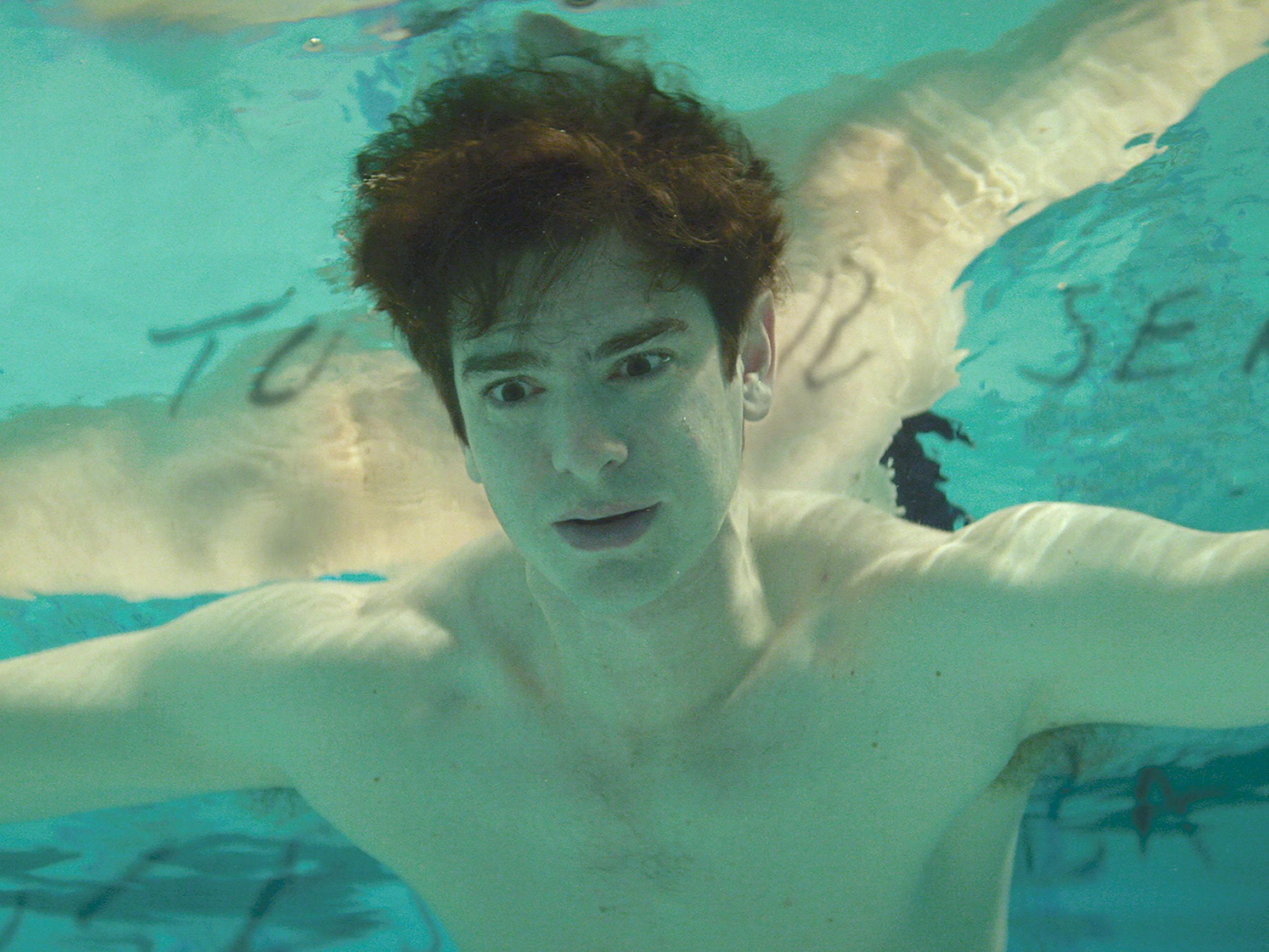
Andrew Garfield
ER: I’ve seen you karaoke the hell out of a situation, but what you did in that movie . . . When he asked you, did you, in your stomach, go, I know I can do this?
AG: It was something along the lines of having a knowing that I could get there because I had the longing to get there. Justin Timberlake, Fred Astaire, and Gene Kelly were my heros when I was a kid — these song and dance men that were able to express themselves poetically through their body, their voice, and their acting ability. I think, secretly, I was longing to reach toward something that I didn’t have the courage to admit to myself.
Not only was it these new skills — piano playing, singing, and dancing — that I had to figure out. You look at Jon, and he’s not just singing; he’s soul-crying on pitch, trying to reach the halls of Congress, trying to reach the inner psyche of Ronald Reagan so that he starts talking about AIDS in public. He’s actually singing to the back row of the galaxy, trying to change the fabric of the culture. So I had to get to that point where I’m bashing away at the keyboard in my boxer shorts, or in my own fantasy world where I’m filled up with all of the voices who are longing to be heard — to the point where I forget if I sound good.
All of this possibility of changing the world — that’s what was pregnant and alive in Jon throughout his very short and brightly burning life. So, I was like, Okay, yeah, I can sing. But [Jon was] using singing to change the world.
ER: In that first song at the piano, this vein was pulling out of your throat and it felt like a roar. Even though you looked like my mate — well, your hair was permed a bit — it was completely transformative. Because of dance and the specificity of music, things have to be controlled or preset, whilst at the same point, you have this figure who is all about spontaneity and being free. I wondered how you and Lin-Manuel created that mixture of really strict ideas with total abandon.
AG: I think the beauty of Jon is that he did revolutionize the form: He combined rock music with musical theater. Lin-Manuel created and rehearsed this like a play and created a community like we do in the theater, which is so much harder when you’re making a film or a television show — the infrastructure and rituals aren’t there. By the time the camera was rolling, we were all living together. We were shooting “Boho Days” in the middle of COVID, and Lin comes in covered in PPE and says, “I’m going to d.j. Party and make out and dance on each other and breathe in each other’s faces.” We were all so starved of human contact, of the things that Jon was writing about and fighting for, that we all just went mad.
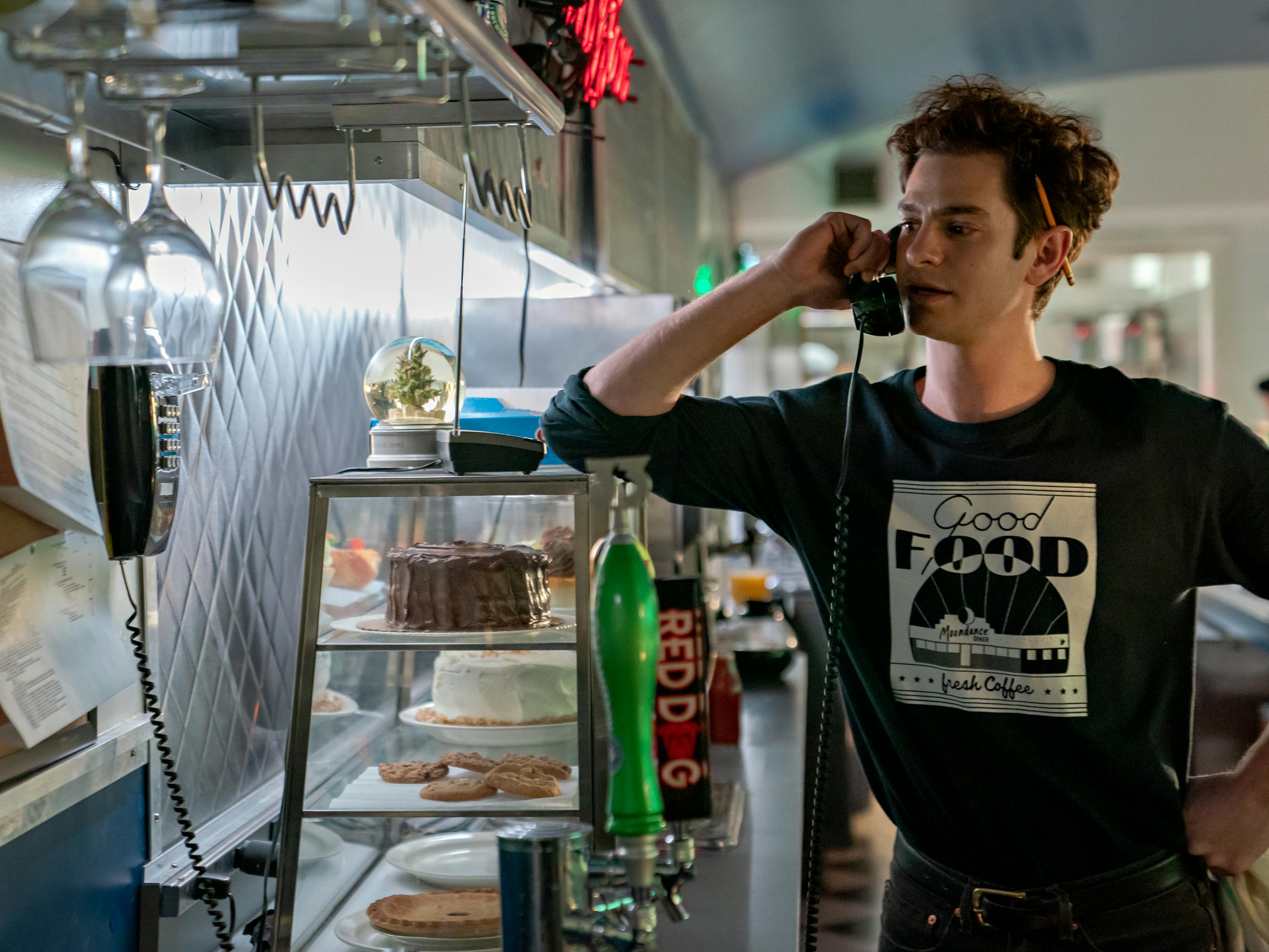
Andrew Garfield
ER: I’ve seen you karaoke the hell out of a situation, but what you did in that movie . . . When he asked you, did you, in your stomach, go, I know I can do this?
AG: It was something along the lines of having a knowing that I could get there because I had the longing to get there. Justin Timberlake, Fred Astaire, and Gene Kelly were my heros when I was a kid — these song and dance men that were able to express themselves poetically through their body, their voice, and their acting ability. I think, secretly, I was longing to reach toward something that I didn’t have the courage to admit to myself.
Not only was it these new skills — piano playing, singing, and dancing — that I had to figure out. You look at Jon, and he’s not just singing; he’s soul-crying on pitch, trying to reach the halls of Congress, trying to reach the inner psyche of Ronald Reagan so that he starts talking about AIDS in public. He’s actually singing to the back row of the galaxy, trying to change the fabric of the culture. So I had to get to that point where I’m bashing away at the keyboard in my boxer shorts, or in my own fantasy world where I’m filled up with all of the voices who are longing to be heard — to the point where I forget if I sound good.
All of this possibility of changing the world — that’s what was pregnant and alive in Jon throughout his very short and brightly burning life. So, I was like, Okay, yeah, I can sing. But [Jon was] using singing to change the world.
ER: In that first song at the piano, this vein was pulling out of your throat and it felt like a roar. Even though you looked like my mate — well, your hair was permed a bit — it was completely transformative. Because of dance and the specificity of music, things have to be controlled or preset, whilst at the same point, you have this figure who is all about spontaneity and being free. I wondered how you and Lin-Manuel created that mixture of really strict ideas with total abandon.
AG: I think the beauty of Jon is that he did revolutionize the form: He combined rock music with musical theater. Lin-Manuel created and rehearsed this like a play and created a community like we do in the theater, which is so much harder when you’re making a film or a television show — the infrastructure and rituals aren’t there. By the time the camera was rolling, we were all living together. We were shooting “Boho Days” in the middle of COVID, and Lin comes in covered in PPE and says, “I’m going to d.j. Party and make out and dance on each other and breathe in each other’s faces.” We were all so starved of human contact, of the things that Jon was writing about and fighting for, that we all just went mad.
ER: I’ve watched this amazing video on YouTube of all the Easter eggs in tick, tick . . . BOOM! There were so many cameos: Larson’s sister, Stephen Schwartz at the workshop, “Sunday” where you have some of the greatest actors in Broadway history standing in front of you. There’s playing a real person, and then there’s playing a real person immediately in front of family members and friends. How did you deal with that?
AG: That’s just one version of the thing that creates doubt for artists. I remember being in rehearsals for Angels in America and Tony Kushner shows up in the rehearsal room. And I look over to Tony and he can’t look me in the eye.We finish, and I go for a walk on the Thames, and I’m considering how to fall in the water so that I get some kind of bacterial infection and I don’t have to go back into rehearsals. After about half an hour of figuring out how to injure myself, I realize, “Oh, this is the same old friend that comes up every time I go to act: Who do you think you are? You don’t know what you’re doing.” We could throw ourselves in the river or we could just step back into the rehearsal room and try again. All the imposter syndrome stuff — you think you’re going to die if you walk on stage. But I realized early on, I’m actually going to die if I don’t. There’s a part of my soul or my heart that’s going to fade if I don’t put myself in the firing line. So I try to take that fear and use it as a tailwind.
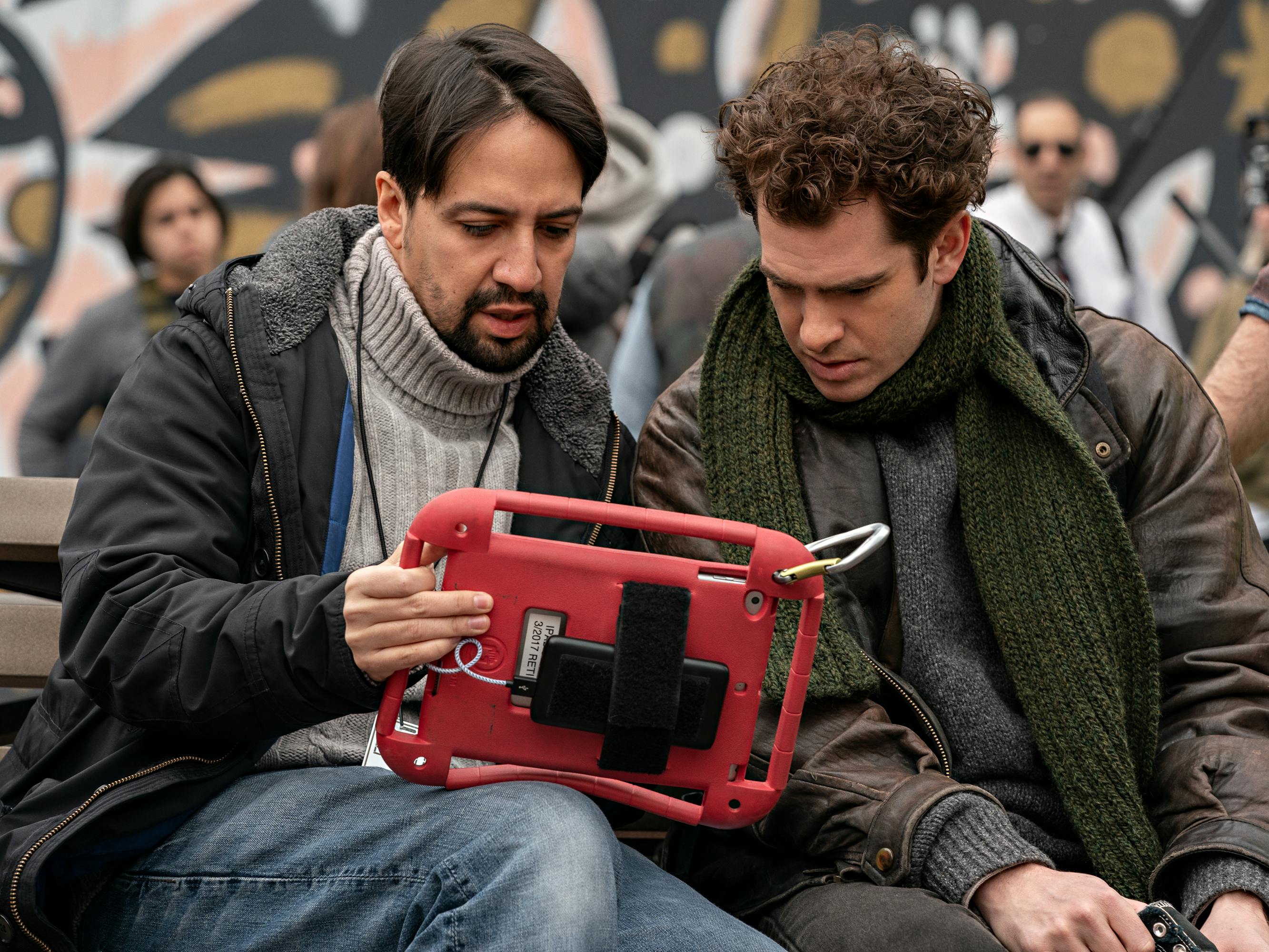
Lin-Manuel Miranda and Andrew Garfield
ER: On stage each night when I do Cabaret, I’m like, “Oh, can I just go back and try that again?” Of course, there are other limitations of doing a musical on film. Given that it was Lin’s first directing job, how did you mesh processes?
AG: Lin has this confidence and competence where he actually wants everyone’s gifts to show up. He doesn’t want to be didactic about who sits where and when this happens. Early on he figured out the way I work, especially with a character like this, is This guy is turned up to an 11 all the time. His guts are on fire all the time. When that happens, we have to not be concerned if it’s good, but just allow the instrument to express the soul. Lin had this confidence and awareness because Jon’s music, lyrics, work, and whole ethos of living are in Lin’s work and are a huge influence on Lin. If I was bashing my head against something, he could help unlock it.
ER: Talk me through the technical elements. How was singing live versus recorded?
AG: We started before the pandemic. We got through the first week and a half of shooting and then Tom Hanks got COVID, the NBA shut down, and I see a scene scheduled at the end of the first week, and it’s the song “Why” in the Delacorte Theater in Central Park: the emotional crux of Jonathan Larson’s journey. And Lin’s like, “Yeah, we’re doing that at the end of the first week.” I’m like, “What are you talking about? No we’re not.” And he’s like, “This is great. You’re going to get it out of the way. It’ll clear the path. Also because we’re going to lose the location unless we do it in the first week.”
There were a few songs we needed to do live, and “Why” was one of them — the pre-record is clean, but it doesn’t feel raw or alive. It doesn’t feel like this man may not make it through this song. It’s this impossible moment of loss and devastation and the only way through is the piano, music, song, lyrics, and singing. And [filming it live], it was that feeling that we rarely get as actors where we come to after the take and we’re dependent on people around us to let us know [what happened]. Lin was the first face I saw, and he was sobbing. Then the sound mixer was like, “That’s the take we have to use. It has to be live.” And then we shut down for the pandemic. If I had had that looming over me, I might have lost my mind.
ER: That feeling is so rare, but that’s the addiction. What is the hardest thing about playing a character that existed in real life?
AG: I think that’s where the beauty of what we do as storytellers and as actors is: That sense of responsibility and service to an audience, to connect our collective experience of being human beings. That’s when our lives become most meaningful. Of course there was so much preparation, so much research and footage to look at, friends to meet: from his sister, Julie, who was on set every day, to the person that lost their virginity to Jon. Not to mention that they were all the most supportive, Julie especially — we owe a lot to her in terms of keeping Jon’s spirit alive. Everyone wanted to share every aspect of his life because they wanted him to still be here. But that being said, of course there was this terrible pressure: Am I ever going to be able to fully honor this soul that was so important and continues to be so important to so many? But Jon’s spirit — that was the North Star.
Then there’s this other thing which happens: It seems like his old friends get him back for two hours whenever they want. When it transcends making a movie, when it actually does something in people’s lives, you go, to quote Jon, “What a way to spend the day.” I want to spend my time this way and only this way.
ER: Is there a specific song in tick, tick . . . BOOM! that struck you most emotionally?
AG: I love every song, but “Why” is that song. It becomes a ritual for Jon — and is still a ritual for me if I need it — in terms of integrating loss, living with death. He’s being initiated into an awareness that life is so sacred and short. I lost my mother before we started shooting. So that song in the Delacorte with Julie and Jon’s spirit there . . . just as this film gives Jon back for a couple of hours, that song will be a way of having my mum back for moments.
ER: Do you have any advice for young artists who have a similar frustration to Jonathan in tick, tick . . . BOOM!?
AG: I think the answer is in the film. If we feel like we have no choice but to do what we do, if we might just lose ourselves if we let go, then we must act, make music, tell stories. One of the things that has been most transcendent about this film is the response from young artists realizing what they have to do, in the same way that Lin was deeply influenced by seeing tick, tick . . . BOOM! when he was 21. There wouldn’t be Hamilton without tick, tick . . . BOOM! There wouldn’t be In the Heights without tick, tick . . . BOOM! in the same way that there wouldn’t be RENT without Sondheim. I think this film is a little message in a bottle. It’s up to us as a community to actually make sure that we all have the opportunity to do the thing that we’re meant to do.
